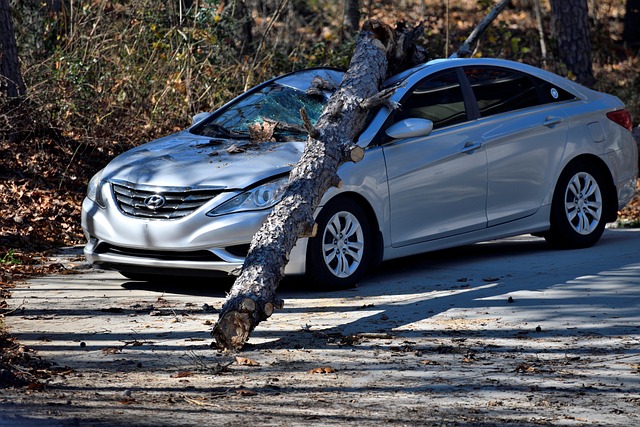Full Coverage Insurance offers vehicle owners peace of mind by protecting against a wide range of risks, from accidents and theft to natural disasters. It includes collision and comprehensive coverage, ensuring drivers aren't solely responsible for repairs or replacement costs. This type of insurance also provides add-ons like rental car coverage and medical payments. To choose the right policy, compare quotes focusing on liability, collision, comprehensive, and personal injury protection (PIP) components. Understand deductibles, limitations, and exclusions to tailor coverage that fits individual needs and budget while providing comprehensive protection for unexpected events.
“In today’s unpredictable world, safeguarding your assets is paramount. This is where Full Coverage Insurance steps in as a comprehensive protective shield. Our article offers an in-depth exploration of this vital policy type. From understanding its core benefits and advantages to navigating the claims process, we’ve got you covered. We’ll delve into the key components, debunk common myths, and help you determine if full coverage is right for you. Empower yourself with knowledge and make informed decisions regarding your peace of mind.”
Understanding Full Coverage Insurance: A Comprehensive Overview

Full Coverage Insurance is a term that refers to a type of auto insurance policy designed to protect vehicle owners from financial loss in the event of an accident or other unforeseen circumstances. Unlike basic liability coverage, which typically covers medical expenses and property damage up to a certain limit, full coverage encompasses a broader range of protections. This includes collision coverage, comprehensive coverage, and often additional perks like roadside assistance and rental car benefits.
Understanding full coverage insurance involves grasping these key components. Collision coverage steps in when your vehicle experiences damages due to a crash with another object or vehicle, while comprehensive coverage protects against non-collision related incidents such as theft, vandalism, natural disasters, or animal strikes. By bundling these protections, full coverage offers peace of mind, ensuring that policyholders are financially secured regardless of the circumstances surrounding a claim.
Why Choose Full Coverage? Benefits and Advantages

Choosing full coverage insurance offers several compelling benefits that provide peace of mind and financial protection. Unlike minimal liability policies, full coverage encompasses a wide range of potential risks, from accidents to natural disasters, ensuring you’re protected against unexpected events. This comprehensive approach means if your vehicle suffers damage or is stolen, you won’t bear the full cost of repairs or replacement.
Full coverage insurance also includes protective measures like rental car coverage during repairs and medical payments for injured occupants. These advantages are particularly valuable for drivers who value security and don’t want to face the financial burden of unforeseen circumstances. By opting for full coverage, you’re not just insuring your vehicle; you’re safeguarding yourself against potential financial hardships.
Components of Full Coverage Policy: What's Included

A full coverage insurance policy is designed to protect policyholders from various risks associated with vehicle ownership, offering comprehensive peace of mind on the road. The key components of such a policy typically include collision coverage, which compensates for damages resulting from accidents; comprehensive coverage, protecting against non-accident related incidents like theft, vandalism, or natural disasters; liability insurance, covering legal expenses and compensation for injuries or property damage caused to others in an accident; and in some cases, personal injury protection (PIP), providing financial support for medical treatment and lost wages.
These inclusions ensure a robust safety net against unexpected events. For instance, if your car is damaged in a collision, collision coverage will help pay for repairs or even total loss. Comprehensive coverage steps in for incidents like theft or damage from environmental factors. Moreover, liability insurance is vital to shield you from financial burdens arising from causing harm to others. Full coverage insurance thus encompasses these critical elements, providing drivers with comprehensive protection tailored to diverse scenarios on modern roads.
Who Needs Full Coverage Insurance? Eligibility Considerations

Everyone’s insurance needs are unique, but full coverage insurance is often a smart choice for drivers who want comprehensive protection. This type of policy goes beyond the standard liability coverage and includes reimbursement for damages to your own vehicle in case of an accident, theft, or vandalism. It also typically covers medical expenses for injuries sustained by you or your passengers.
While specific eligibility criteria vary by insurance provider and location, most full coverage insurance policies are available to individuals with a clean driving record and adequate financial resources to cover potential claims. It’s essential to carefully review the policy details, including deductibles and coverage limits, to ensure it aligns with your needs and budget.
Comparing Policies: Uncovering the Best Deals on Full Coverage

When shopping for Full Coverage Insurance, comparing policies is essential to uncover the best deals. Start by evaluating the four main components: liability, collision, comprehensive, and personal injury protection (PIP). Each component offers different levels of protection, so tailor your choices based on individual needs. For instance, if you drive an older vehicle that’s prone to accidents, consider enhancing collision and comprehensive coverage for peace of mind.
Next, scrutinize deductibles – the amount you pay out-of-pocket before insurance kicks in. Lower deductibles mean higher premiums but can save money in the event of a minor accident. Additionally, review the policy’s limitations and exclusions carefully. Some policies may not cover specific events or have restrictions on pre-existing conditions. Understanding these details will help ensure you’re getting comprehensive protection at a price that fits your budget.
Claims Process: Navigating Full Coverage Insurance Claims

Navigating a claim with full coverage insurance can seem daunting, but understanding the process is key to ensuring a smooth experience. The first step involves contacting your insurance provider as soon as possible after an accident or incident covered under your policy. They will guide you through gathering necessary information and documents related to the loss or damage. This may include police reports, photographs of the affected area, and estimates for repairs or replacement costs.
The claims adjuster will then assess the claim and determine the validity and extent of coverage. Full coverage insurance typically includes comprehensive and collision coverage, which can help cover a wide range of incidents from theft to natural disasters. Once approved, your insurer will work with you to facilitate repairs or provide compensation for replacements, ensuring that you are restored to your pre-incident state as much as possible.
Common Misconceptions About Full Coverage Insurance Debunked

Many people often confuse full coverage insurance with having all-encompassing protection, but this isn’t entirely accurate. A common misconception is that full coverage means your policy will pay for any and every possible damage or loss to your vehicle. However, in reality, it refers to a specific combination of coverages designed to protect you from significant financial losses. This typically includes collision coverage, comprehensive coverage, and liability protection. Collision coverage steps in when you’re involved in an accident, while comprehensive coverage protects against events like theft, natural disasters, or vandalism.
Another myth is that full coverage is always the most expensive option. While it offers robust protection, policies can vary greatly in price depending on several factors, such as your driving history, vehicle make and model, and location. It’s essential to shop around and compare quotes to find a balance between comprehensive protection and affordable premiums. Remember, understanding what’s included and what’s excluded from your policy is crucial before making any assumptions about full coverage insurance.
